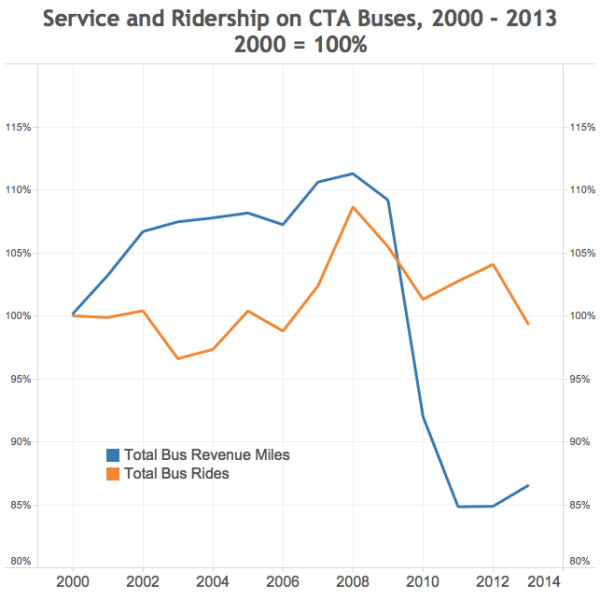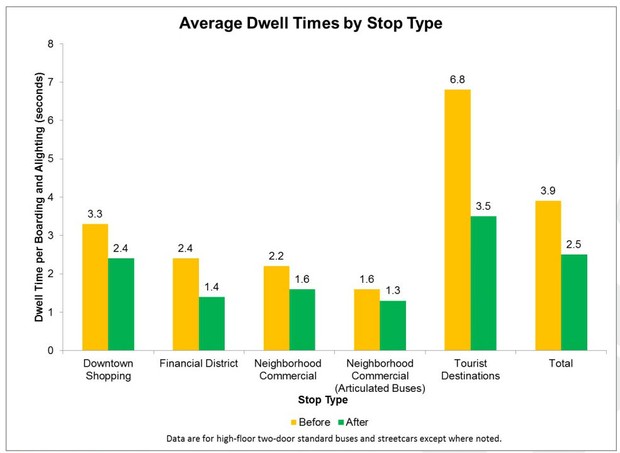- Joined
- Dec 10, 2011
- Messages
- 5,599
- Reaction score
- 2,717
Here's an MBTA thread devoted to the ups and downs of the buses.
I'm going to start with the provocative point: in any system that hasn't been modified in a while, there are likely to be lots of underserved lines, and, at the same time, over served lines.
This seems particularly true of bus routes, even though one of their original virtues (vs streetcars) was supposed to be the ease of adapting service to demand.
Look at this chart from Chicago:

Some may weep that bus ridership (orange) is down. I rejoice that it looks like they did a great job of cutting underused lines (blue) while suffering little ridership losses. In fact, I'd say the CTA did a great job of trimming costs--whacking 25% of bus miles--without trimming benefits near as much (losing only 8% of ridership. It suggests that the buses whacked were only 1/4 as full as the ones that didn't get whacked.
In Boston, you could do the same thing, although as smart-or-smarter would be to redeploy the cut buses onto busy routes and really boost their frequency--and drive ridership even higher.
I'd say, for each bus garage, cut service on the slowest route, combine the next two slowest (that can be easily combined) and redeploy that bus on some top 5 route that would likely reward that bus with expanded ridership.
I suspect that I'm going to want to peruse the most recent Blue Book to find a good example.
I'm going to start with the provocative point: in any system that hasn't been modified in a while, there are likely to be lots of underserved lines, and, at the same time, over served lines.
This seems particularly true of bus routes, even though one of their original virtues (vs streetcars) was supposed to be the ease of adapting service to demand.
Look at this chart from Chicago:

Some may weep that bus ridership (orange) is down. I rejoice that it looks like they did a great job of cutting underused lines (blue) while suffering little ridership losses. In fact, I'd say the CTA did a great job of trimming costs--whacking 25% of bus miles--without trimming benefits near as much (losing only 8% of ridership. It suggests that the buses whacked were only 1/4 as full as the ones that didn't get whacked.
In Boston, you could do the same thing, although as smart-or-smarter would be to redeploy the cut buses onto busy routes and really boost their frequency--and drive ridership even higher.
I'd say, for each bus garage, cut service on the slowest route, combine the next two slowest (that can be easily combined) and redeploy that bus on some top 5 route that would likely reward that bus with expanded ridership.
I suspect that I'm going to want to peruse the most recent Blue Book to find a good example.

